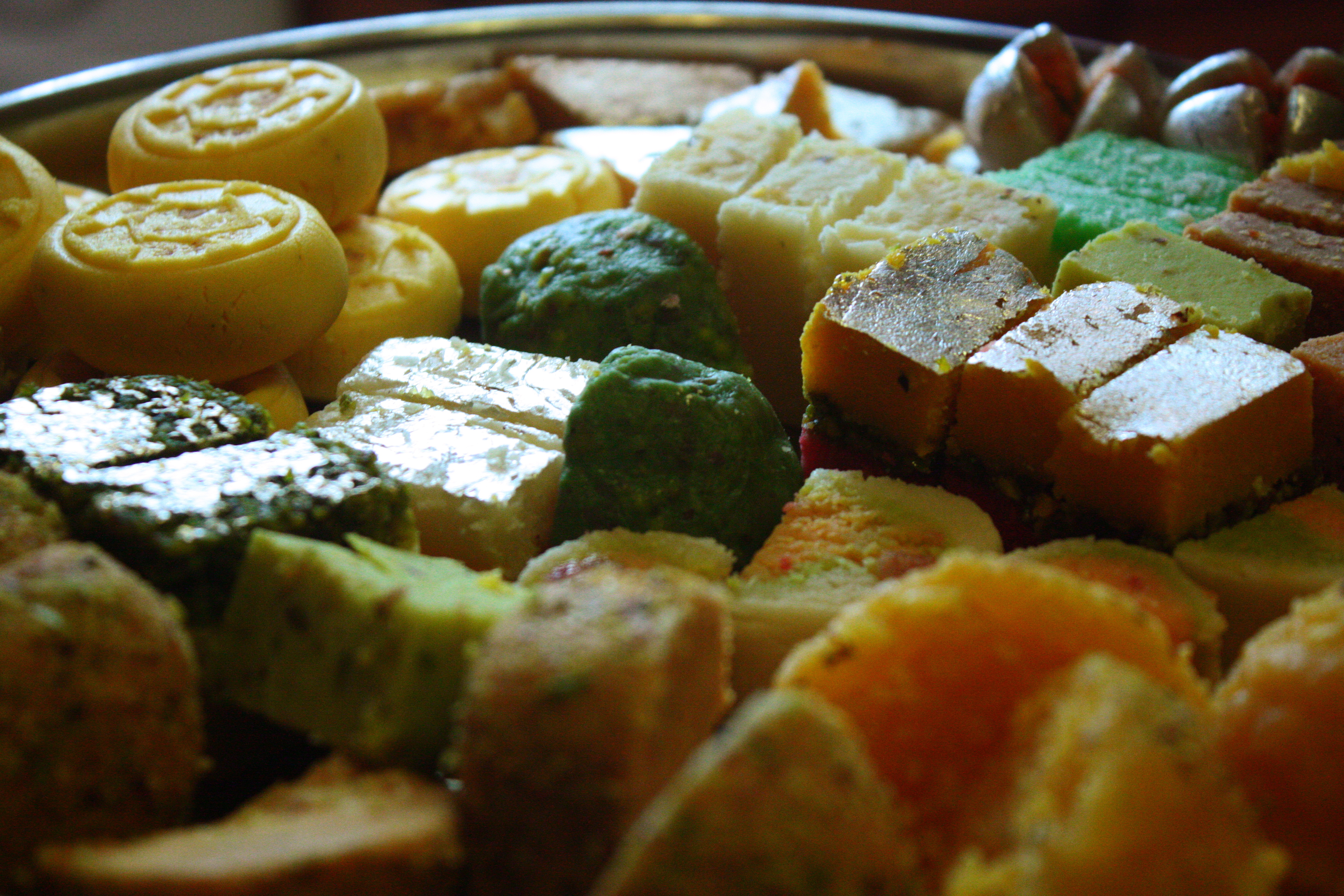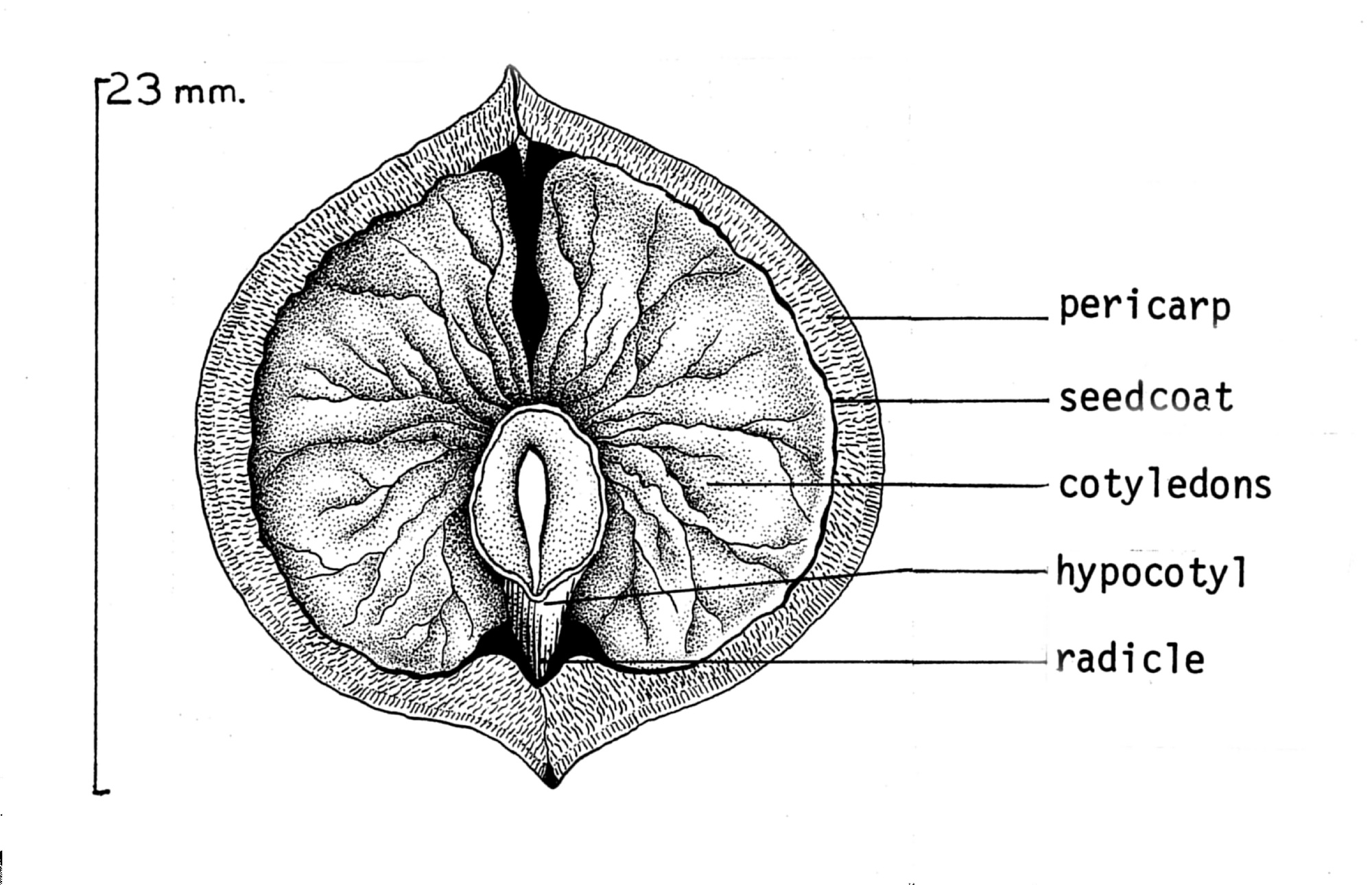|
Barfi
Barfi or ''burfi'' is a milk-based sweet from the Indian subcontinent with a fudge-like consistency. Its name comes from the Persian and Urdu word (''barf'') for snow. ''Barfi'' is consumed throughout India, Bangladesh and Pakistan and is especially popular in North India. It is often served at celebrations and religious festivals such as Shab-e-Barat, Diwali and Holi. History ''Barfi'' originated in Persia and was introduced to India by the Mughal Empire in the 16th century. Through indentured workers it was brought to Trinidad in the mid-19th century and became popular there. Preparation To prepare ''barfi'', '' khoa'' (condensed milk) and granulated sugar are mixed and cooked together. When the mixture thickens to a fudge-like consistency, it is spread onto a greased plate. After cooling, it is cut into squares, diamonds, or circles. It can also be formed into balls, layered, or rolled into multicolored slices. When served at special occasions, it is often decorated wit ... [...More Info...] [...Related Items...] OR: [Wikipedia] [Google] [Baidu] |
Sweet From The Indian Subcontinent
Mithai (sweets) are the confectionery and desserts of the Indian subcontinent.The Sweet Side of the Subcontinent Raison d'Etre, New York City (September 20, 2012) Thousands of dedicated shops in , , , and |
Khoa
Khoa, khoya, khowa or mawa is a dairy food widely used in the cuisines of the Indian subcontinent, encompassing India, Nepal, Bangladesh and Pakistan. It is made of either dried whole milk or milk thickened by heating in an open iron pan. It is lower in moisture than typical fresh cheeses such as ricotta. It is made from whole milk instead of whey. Preparation A concentration of milk to one-fifth volume is normal in the production of khoa. Khoa is used as the base for a wide variety of Indian sweets. About 600,000 metric tons are produced annually in India. Khoa is made from both cow and domestic buffalo, water buffalo milk. Khoa is made by simmering full-fat milk in a large, shallow iron pan for several hours over a medium fire. The gradual evaporation of its water content leaves only the milk solids. The ideal temperature to avoid scorching is about . Another quick way of making khoa is to add full-fat milk powder to skimmed milk and mixing and heating it until it becomes thick. ... [...More Info...] [...Related Items...] OR: [Wikipedia] [Google] [Baidu] |
Trinidad And Tobago
Trinidad and Tobago, officially the Republic of Trinidad and Tobago, is the southernmost island country in the Caribbean, comprising the main islands of Trinidad and Tobago, along with several List of islands of Trinidad and Tobago, smaller islets. The capital city is Port of Spain, while its largest and most populous municipality is Chaguanas. Despite its proximity to South America, Trinidad and Tobago is generally considered to be part of the Caribbean. Trinidad and Tobago is located northeast off the coast of Venezuela, south of Grenada, and 288 kilometres (155 nautical miles) southwest of Barbados. Indigenous peoples of the Americas, Indigenous peoples inhabited Trinidad for centuries prior to Spanish Empire, Spanish colonization, following the arrival of Christopher Columbus in 1498. Spanish governor José María Chacón surrendered the island to a British fleet under Sir Ralph Abercromby's command in 1797. Trinidad and Tobago were ceded to Britain in 1802 under t ... [...More Info...] [...Related Items...] OR: [Wikipedia] [Google] [Baidu] |
Cashews
Cashew is the common name of a tropical evergreen tree ''Anacardium occidentale'', in the family Anacardiaceae. It is native to South America and is the source of the cashew nut and the cashew apple, an accessory fruit. The tree can grow as tall as , but the dwarf cultivars, growing up to , prove more profitable, with earlier maturity and greater yields. The cashew nut is edible and is eaten on its own as a snack, used in recipes, or processed into cashew cheese or cashew butter. The nut is often simply called a 'cashew'. The cashew apple is a light reddish to yellow fruit, whose pulp and juice can be processed into a sweet, astringent fruit drink or fermented and distilled into liquor. In 2023, 3.9 million tons of cashew nuts were harvested globally, led by the Ivory Coast and India. In addition to the nut and fruit, the shell yields derivatives used in lubricants, waterproofing, and paints. Description The cashew tree is large and evergreen, growing to tall, with a short, ... [...More Info...] [...Related Items...] OR: [Wikipedia] [Google] [Baidu] |
Almonds
The almond (''Prunus amygdalus'', syn. ''Prunus dulcis'') is a species of tree from the genus ''Prunus''. Along with the peach, it is classified in the subgenus ''Amygdalus'', distinguished from the other subgenera by corrugations on the shell ( endocarp) surrounding the seed. The fruit of the almond is a drupe, consisting of an outer hull and a hard shell with the seed, which is not a true nut. ''Shelling'' almonds refers to removing the shell to reveal the seed. Almonds are sold shelled or unshelled. Blanched almonds are shelled almonds that have been treated with hot water to soften the seedcoat, which is then removed to reveal the white embryo. Once almonds are cleaned and processed, they can be stored for around a year if kept refrigerated; at higher temperatures they will become rancid more quickly. Almonds are used in many cuisines, often featuring prominently in desserts, such as marzipan. The almond tree prospers in a moderate Mediterranean climate with cool ... [...More Info...] [...Related Items...] OR: [Wikipedia] [Google] [Baidu] |
Diwali
Diwali (), also called Deepavali (IAST: ''Dīpāvalī'') or Deepawali (IAST: ''Dīpāwalī''), is the Hindu festival of lights, with variations celebrated in other Indian religions such as Jainism and Sikhism. It symbolises the spiritual victory of ''Dharma'' over ''Adharma'', light over darkness, good over evil, and knowledge over ignorance.Jean Mead, ''How and why Do Hindus Celebrate Divali?'', Diwali is celebrated during the Hindu calendar, Hindu lunisolar months of Ashvin (month), Ashvin (according to the Hindu calendar#amanta, amanta tradition) and Kartika (month), Kārtikabetween around mid-September and mid-November.''The New Oxford Dictionary of English'' (1998) – p. 540 "Diwali /dɪwɑːli/ (also Diwali) noun a Hindu festival with lights...". The celebrations generally last five or six days. Diwali is connected to various religious events, deities and personalities, such as being the day Rama returned to his Kosala, kingdom in Ayodhya (Ramayana), Ayodhya with h ... [...More Info...] [...Related Items...] OR: [Wikipedia] [Google] [Baidu] |
Vark
Vark (also varak, Waraq, or warq) is a fine filigree foil sheet of pure metal, typically silver but sometimes gold,Gold in Gastronomy deLafee, Switzerland (2008) used to decorate Indian sweets and . The silver and gold are edible, though flavorless. Vark is made by pounding silver into sheets less than one (μm) thick, typically 0.2–0.8 μm. The silver sheets are typ ... [...More Info...] [...Related Items...] OR: [Wikipedia] [Google] [Baidu] |
Coconut
The coconut tree (''Cocos nucifera'') is a member of the palm tree family (biology), family (Arecaceae) and the only living species of the genus ''Cocos''. The term "coconut" (or the archaic "cocoanut") can refer to the whole coconut palm, the seed, or the fruit, which botanically is a drupe, not a Nut (fruit), nut. Originally native to Central Indo-Pacific, they are now ubiquitous in coastal tropical regions and are a cultural icon of the tropics. The coconut tree provides food, fuel, cosmetics, folk medicine and building materials, among many other uses. The inner flesh of the mature seed, as well as the coconut milk extracted from it, forms a regular part of the diets of many people in the tropics and subtropics. Coconuts are distinct from other fruits because their endosperm contains a large quantity of an almost clear liquid, called "coconut water" or "coconut juice". Mature, ripe coconuts can be used as edible seeds, or processed for Coconut oil, oil and Coconut milk, ... [...More Info...] [...Related Items...] OR: [Wikipedia] [Google] [Baidu] |
Granulated Sugar
White sugar, also called table sugar, granulated sugar, or regular sugar, is a commonly used type of sugar, made either of beet sugar or cane sugar, which has undergone a refining process. It is nearly pure sucrose. Description The refining process completely removes the molasses from cane juice or beet juice to give the disaccharide white sugar, sucrose. It has a purity higher than 99.7%. Its molecular formula is . White sugars produced from sugar cane and sugar beet are chemically indistinguishable: it is possible, however, to identify its origin through a carbon-13 analysis. White sugar (and some brown sugar) produced from sugar cane may be refined using bone char by a few sugar cane refiners. Beet sugar has never been processed with bone char and is vegan. In modern times, activated carbon and ion-exchange resin may be used – see . From a chemical and nutritional point of view, white sugar does not contain—in comparison to brown sugar—some minerals (such as ... [...More Info...] [...Related Items...] OR: [Wikipedia] [Google] [Baidu] |
Indian Subcontinent
The Indian subcontinent is a physiographic region of Asia below the Himalayas which projects into the Indian Ocean between the Bay of Bengal to the east and the Arabian Sea to the west. It is now divided between Bangladesh, India, and Pakistan. (subscription required) Although the terms "Indian subcontinent" and "South Asia" are often also used interchangeably to denote a wider region which includes, in addition, Bhutan, the Maldives, Nepal and Sri Lanka, the "Indian subcontinent" is more of a geophysical term, whereas "South Asia" is more geopolitical. "South Asia" frequently also includes Afghanistan, which is not considered part of the subcontinent even in extended usage.Jim Norwine & Alfonso González, ''The Third World: states of mind and being'', pages 209, Taylor & Francis, 1988, Quote: ""The term "South Asia" also signifies the Indian Subcontinent""Raj S. Bhopal, ''Ethnicity, race, and health in multicultural societies'', pages 33, Oxford University Press, 2007, ; Q ... [...More Info...] [...Related Items...] OR: [Wikipedia] [Google] [Baidu] |
Nut (fruit)
A nut is a fruit consisting of a hard or tough nutshell protecting a kernel which is usually edible. In general usage and in a culinary sense, many dry seeds are called nuts, but in a botanical context, "nut" implies that the shell does not open to release the seed (Dehiscence (botany), indehiscent). Most seeds come from fruits that naturally free themselves from the shell, but this is not the case in nuts such as hazelnuts, chestnuts, and acorns, which have hard shell walls and originate from a compound ovary. Definition A seed is the mature fertilised ovule of a plant; it consists of three parts, the embryo which will develop into a new plant, stored food for the embryo, and a protective seed coat. Botany, Botanically, a nut is a fruit with a woody pericarp developing from a syncarpous gynoecium. Nuts may be contained in an Bract#Involucral bracts, involucre, a cup-shaped structure formed from the flower bracts. The involucre may be scaly, spiny, leafy or tubular, depending ... [...More Info...] [...Related Items...] OR: [Wikipedia] [Google] [Baidu] |








